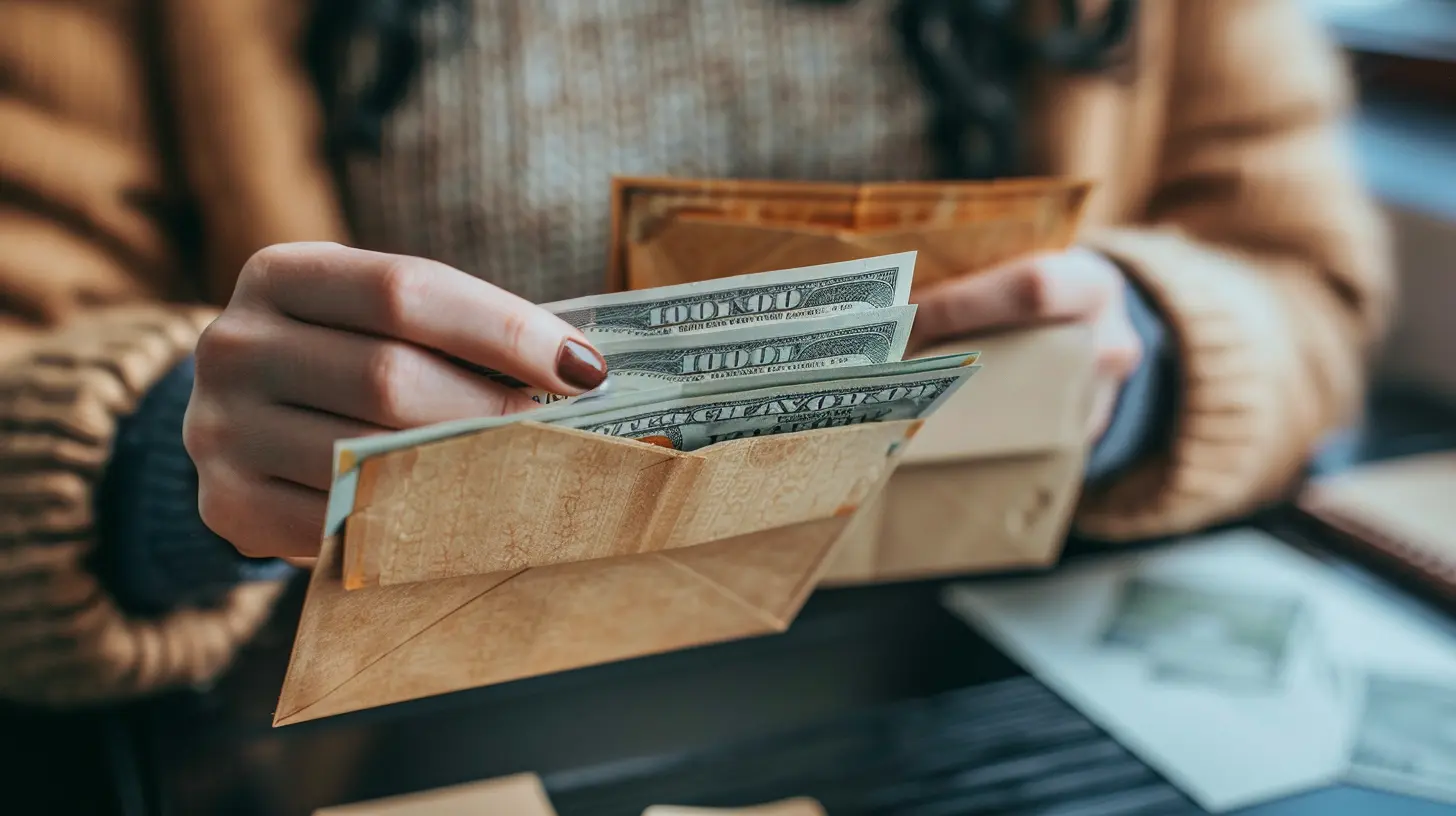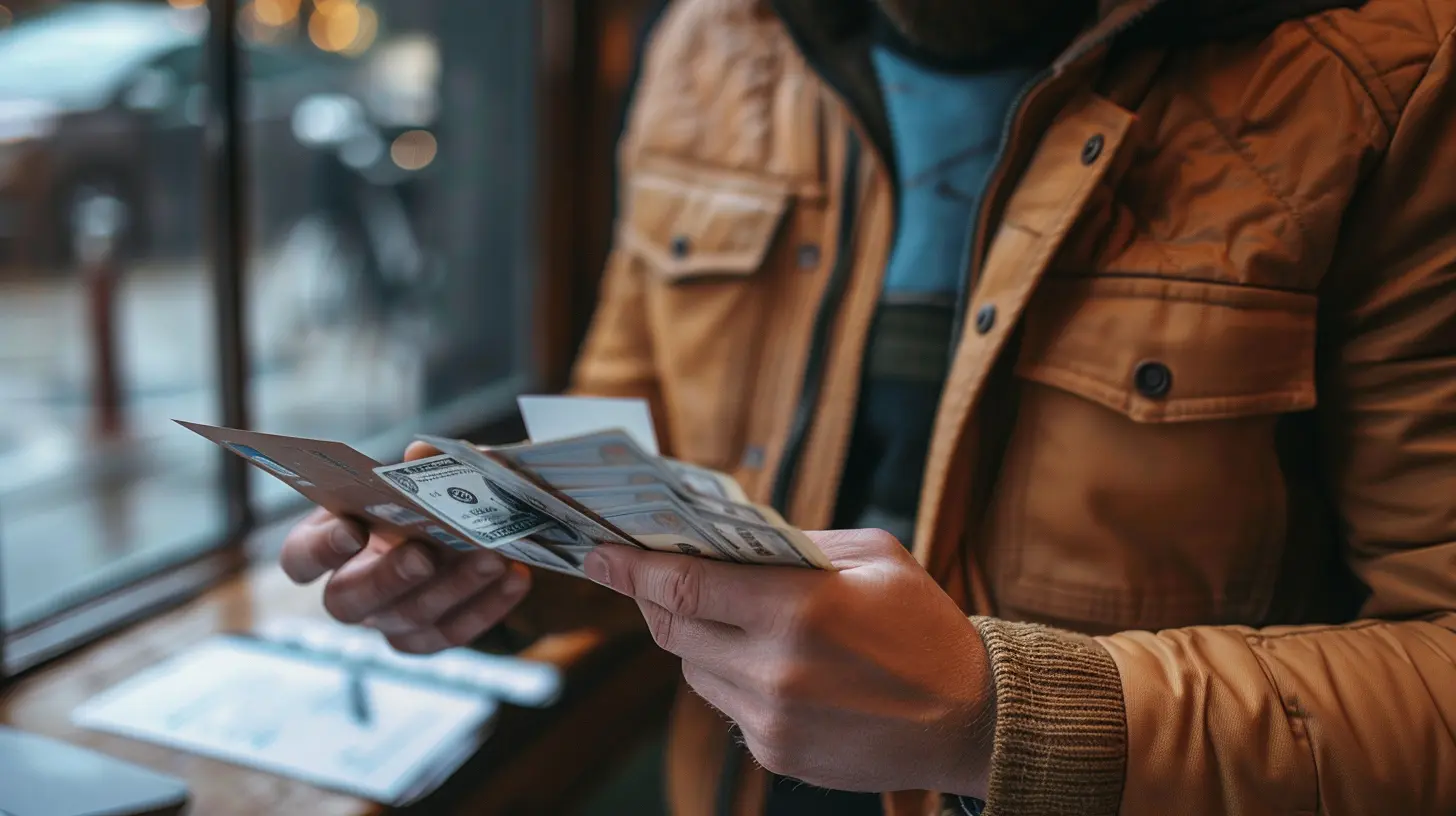14 April 2025
Managing your money can feel overwhelming, especially when you’re trying to rein in unnecessary spending. If you've ever found yourself wondering where your paycheck disappeared to, you’re not alone!
One of the simplest yet most effective budgeting methods is the cash envelope system. It forces you to be mindful of your spending, keeps your finances organized, and helps you avoid going over budget.
In this guide, we’ll break down how to use envelopes to track your spending, why this old-school method still works, and how you can start implementing it today. 
What is the Envelope Budgeting System?
The envelope system is a cash-based budgeting method where you allocate specific amounts of money to different spending categories and place the cash in labeled envelopes. When the cash in an envelope is gone, you can’t spend any more in that category until your next budgeting period.This system helps you control your spending and prevents overspending by making sure you only use the cash you’ve set aside.
Why Does It Work?
Unlike swiping a debit or credit card, which can feel effortless, paying with cash makes your spending feel more “real.” When you physically hand over cash, you’re more aware of how much you’re spending, which can lead to better financial decisions.
Step-by-Step Guide to Using Envelopes for Budgeting
If you’re ready to take control of your finances using the envelope system, follow these steps:1. Determine Your Budget Categories
Before you start stuffing envelopes with cash, you need to figure out what categories you want to track. Typical categories include:- Groceries
- Dining Out
- Gas/Transportation
- Entertainment
- Personal Spending
- Household Essentials
Anything that involves regular spending where you tend to go over budget is a great candidate for an envelope.
2. Set Spending Limits for Each Category
Look at your income and expenses. Based on your financial situation, decide how much cash to allocate to each category. Make it realistic—don’t set yourself up for failure by allotting too little or too much.For example:
- Groceries: $400
- Dining Out: $100
- Gas: $150
- Entertainment: $75
The key here is to be intentional with your budget and stick to the limits you set.
3. Withdraw Cash and Fill Your Envelopes
Once you’ve determined your budgeted amounts, head to the bank and withdraw the necessary cash. Separate it into your envelopes based on the categories you chose.Make sure to only take out what you need for your budgeting period, whether it's weekly, biweekly, or monthly.
4. Spend Only What’s in the Envelopes
Here’s where discipline comes in. When you need to make a purchase, use only the cash from the appropriate envelope. If you don’t have enough cash in that envelope, you have two choices:- Wait until your next budgeting period to replenish the envelope
- Move cash from another envelope, keeping in mind that this will reduce the amount available for that category
Once the cash is gone, it’s gone—no swiping your card to cover extra expenses!
5. Track Your Spending
To keep yourself accountable, jot down transactions on the envelope itself or in a small notebook. Every time you take cash out, write down the date, amount, and what it was spent on.This simple habit makes it easy to see where your money is going and helps prevent impulse purchases. You’ll quickly notice patterns in your spending habits and can adjust your budget accordingly.
6. Refill the Envelopes with Each New Budget Cycle
At the start of each budgeting period, withdraw new cash and refill your envelopes based on your set limits. Over time, you’ll become better at predicting your spending needs and adjusting your budget to align with reality.
Tips for Success
1. Start Small
If going full cash-based sounds intimidating, start with just one or two spending categories, like groceries and dining out. Once you get the hang of it, expand to other areas of your budget.2. Use Different Envelope Colors or Labels
Make sure each envelope is clearly labeled. Some people prefer color-coded envelopes for different categories, making it even easier to manage.3. Keep an Emergency Fund Separate
The envelope system is great for daily expenses, but for true emergencies, it’s best to have an emergency fund stored safely in a bank account.4. Avoid Carrying Too Much Cash
While the envelope method is great for budgeting, carrying large amounts of cash can be risky. Only take what you need for the day, and leave the rest in a safe place at home.5. Hold Yourself Accountable
The biggest challenge in using envelopes is self-discipline. It can be tempting to borrow from other envelopes or pull out your debit card. Stay committed to the system, and you’ll see long-term benefits.
Pros and Cons of the Envelope System
✅ Pros:
✔ Helps control overspending✔ Encourages mindful spending habits
✔ Eliminates reliance on credit cards
✔ Makes budgeting straightforward and tangible
❌ Cons:
✖ Requires frequent trips to the bank for cash withdrawals✖ Less convenient than using cards or digital payments
✖ Doesn’t build credit history like responsible credit card usage does
If you use the envelope system alongside a budgeting app or digital tracking, you can enjoy the best of both worlds—tangible cash budgeting and convenient tracking.
Digital "Envelope" Alternatives
Living in a cashless world? No problem! You can still use the envelope system digitally by using budgeting apps like:- GoodBudget – A virtual envelope system
- YNAB (You Need A Budget) – Helps allocate money into categories
- EveryDollar – Created by Dave Ramsey, follows a zero-based budget
These apps let you track spending the same way physical envelopes do but without carrying actual cash.
Is the Envelope System Right for You?
The envelope budgeting system is perfect for:✅ People who struggle with impulse spending
✅ Those looking for a simple and effective budgeting method
✅ Anyone who prefers a hands-on approach to money management
However, if you rely heavily on online purchases or don’t want to carry cash, a digital budgeting tool may be better suited for you.
Final Thoughts
Using envelopes to track spending may seem like an old-school approach, but it remains one of the most effective ways to take control of your finances. By setting limits, using only what you’ve budgeted, and staying disciplined, you’ll quickly see improvements in your spending habits.Give it a try for a month—you might be surprised how much more aware you become of your money!


